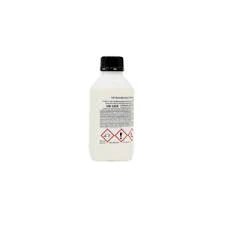flocculation chemicals
The Role of Flocculation Chemicals in Water Treatment
Flocculation is an essential process in water treatment practices, playing a vital role in managing impurities and ensuring safe drinking water. This technique involves the aggregation of fine particles into a floc, which can then be easily removed from water. Flocculation chemicals serve as key agents in this process, facilitating the efficient removal of suspended solids and contaminants. In this article, we’ll delve into the various types of flocculation chemicals, their mechanisms, and their applications in water treatment.
Understanding Flocculation
Flocculation is part of a broader sedimentation process where suspended particles in water come together to form larger clusters, or flocs. These flocs can then settle at the bottom of a treatment facility or can be removed through filtration. The effectiveness of this process largely depends on the use of flocculation chemicals, which can be categorized into two main types coagulants and coagulant aids.
Coagulants, such as aluminum sulfate (alum), ferric chloride, and polyaluminum chloride, are widely used in water treatment facilities. These chemicals work by neutralizing the negative charges on the particles in water, allowing them to come together and form larger aggregates. Coagulant aids, like polyacrylamide, enhance the flocculation process by providing additional surface area for the particles to adhere to, leading to more efficient sedimentation.
Types of Flocculation Chemicals
1. Coagulants The primary function of coagulants is to destabilize and aggregate suspended particles. Alum, for instance, is one of the most commonly used coagulants in municipal water treatment. It not only helps in reducing turbidity but also precipitates dissolved organic materials, making water cleaner.
2. Flocculants These are typically high molecular weight polymers that promote the formation of larger flocs from the smaller particles. They are particularly effective in treatment processes that deal with low turbidity levels. Flocculants enhance the efficiency of sedimentation and filtration processes.
flocculation chemicals

3. pH Control Agents The effectiveness of flocculation can be influenced by the pH of the water. Agents that adjust and maintain the appropriate pH levels ensure that coagulants and flocculants can operate effectively. Maintaining optimal pH is crucial for maximizing the efficiency of the flocculation process.
4. Disinfectants Some flocculation systems also incorporate disinfectants like chlorine or ozone to remove microorganisms. This dual approach not only clarifies the water but also ensures that it is microbiologically safe for consumption.
Applications in Water Treatment
Flocculation chemicals are used extensively across multiple sectors, including municipal water systems, industrial wastewater treatment, and mining operations. In municipal settings, they enable the removal of sediment, organic matter, and pathogens, contributing significantly to public health.
In industrial applications, flocculation chemicals help manage the disposal of waste effluents. By ensuring that contaminants are effectively removed, these chemicals play a crucial role in protecting the environment and adhering to stringent regulatory standards.
In mining, flocculation chemicals help separate valuable minerals from ore, while also managing tailings in an environmentally sound manner. Effectively treating and recycling water in these processes can lead to significant cost savings and reduced environmental impact.
Conclusion
In summary, flocculation chemicals are indispensable components of modern water treatment processes. Their ability to facilitate the removal of contaminants and suspended solids ensures that water remains safe and clean for consumption and industrial use. As water quality standards continue to evolve and the demand for clean water rises, the effectiveness and efficiency of flocculation chemicals will remain paramount in meeting these challenges. Through advancements in chemical formulations and treatment technologies, the future of water treatment looks promising, ensuring sustainability and safety for all.
-
lk-319-special-scale-and-corrosion-inhibitor-for-steel-plants-advanced-solutions-for-industrial-water-systemsNewsAug.22,2025
-
flocculant-water-treatment-essential-chemical-solutions-for-purification-processesNewsAug.22,2025
-
isothiazolinones-versatile-microbial-control-agents-for-industrial-and-consumer-applicationsNewsAug.22,2025
-
scale-inhibitor-key-solutions-for-water-system-scale-preventionNewsAug.22,2025
-
organophosphonates-versatile-scale-inhibitors-for-industrial-water-systemsNewsAug.22,2025
-
scale-and-corrosion-inhibitor-essential-chemical-solutions-for-water-system-maintenanceNewsAug.22,2025





